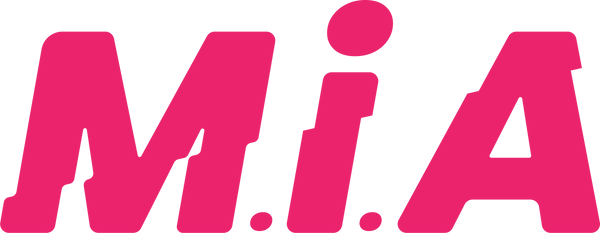Venturing into the world of eCommerce can seem daunting, but Print on Demand (POD) offers a unique, streamlined pathway. With no need for inventory or substantial start-up costs, POD is reshaping the retail landscape.
It's a model that allows entrepreneurs to sell custom-made products—everything from apparel to home décor—printed only once a customer has made a purchase. However, as straightforward as it may sound, achieving success in POD doesn't occur by chance. Just like any other business venture, it necessitates careful planning and a well-crafted business plan.
A robust business plan serves as a roadmap, guiding every decision and ensuring your venture remains aligned with your broader goals. In this blog post, we will guide you through crafting an effective business plan for your POD business.
Understanding the Print-on-Demand Market

Before crafting your POD business plan, a thorough understanding of the market is vital. The print-on-demand industry has shown Consistent Growth in recent years, driven by consumer desire for personalized and unique products. Moreover, as technology has advanced, so too has the ability for POD companies to deliver high-quality, customizable products in an efficient, timely manner.
But just like any other market, the POD landscape isn't devoid of competition. Numerous key players range from major platforms like Printify and Printful to smaller, niche-oriented providers. It's a dynamic field that thrives on novelty and consumer trends, with competitiveness hinging on your unique selling proposition.
Further, it's crucial to stay abreast of market trends and future predictions. For instance, the market is presently witnessing a surge in demand for personalized homeware and decor products. Understanding these trends and leveraging them can give your POD business the competitive edge it needs.
As you navigate through the vast POD market, keeping your finger on the pulse of these dynamics will guide you in establishing a successful business. In the upcoming sections, we'll delve into how this understanding helps shape your business plan.
Defining Your POD Business Goals and Objectives
To steer your print on demand (POD) business towards success, it's crucial to define clear goals and objectives. By setting SMART goals—Specific, Measurable, Achievable, Relevant, and Time-Bound—you lay a solid foundation for your business plan. Specific goals outline exactly what you want to achieve, such as increasing sales by a certain percentage or expanding into new markets.
Measurable goals allow you to track progress and evaluate success objectively. It's essential to set realistic goals that are achievable within your resources and capabilities. Relevant goals ensure that they align with your overall business strategy and contribute to long-term growth. Time-bound goals provide a sense of urgency and help you stay focused on accomplishing tasks within specified timelines.
Clear objectives serve as guiding principles for your business plan. They provide a sense of direction, motivate your team, and act as benchmarks for success. Consider defining objectives related to sales targets, customer acquisition, brand awareness, product development, and customer satisfaction. Your objectives should be specific to your POD business, taking into account your unique value proposition and target market.
By setting clear goals and objectives, you create a roadmap for your POD business, allowing you to focus your efforts, allocate resources effectively, and measure your progress. They serve as a guiding light, enabling you to make informed decisions and prioritize tasks that align with your overall vision. In the next sections, we will explore how to further develop your business plan by understanding your target audience and choosing the right product range for your POD business.
Identifying Your Target Audience

In the world of print on demand (POD), understanding your target audience is paramount to success. Knowing your customers allows you to tailor your products, messaging, and marketing efforts to resonate with their preferences and needs. To identify your target audience, conducting thorough market research is essential.
This involves analyzing demographics, psychographics, and purchasing behavior patterns. Demographics encompass factors like age, gender, location, and income level, providing a broad understanding of your potential customers. Psychographics delve deeper into their interests, values, attitudes, and lifestyle choices, helping you refine your messaging and brand positioning.
Market research can be conducted through surveys, focus groups, social media insights, and competitor analysis. Collecting data and gaining insights into your target audience's preferences, pain points, and aspirations will inform your product development decisions.
Deciding on Your Product Range and Designs
Choosing the right product range and designs is crucial for the success of your print on demand business. It starts with understanding your target audience's preferences and aligning your products accordingly. Analyze market trends, customer feedback, and competitor offerings to identify popular product categories within your niche.
Once you have a clear idea of the product range, focus on creating unique and attractive designs. This involves striking a balance between creativity and market demand. Conducting thorough research on design trends and customer preferences will help you stay ahead of the curve. Experiment with different styles, color schemes, and themes to create designs that resonate with your target audience.
Consider collaborating with talented designers or leveraging design marketplaces to access a wide range of design options. Aim for designs that evoke emotion, capture attention, and differentiate your products from the competition.
Remember, continually gathering customer feedback and monitoring market trends will enable you to refine your product range and designs to meet evolving customer preferences. In the subsequent sections, we will delve into effective marketing strategies and financial considerations to strengthen your POD business plan.
Choosing Your Print on Demand Service Provider
Selecting the right print on demand (POD) service provider is crucial for the smooth operation of your business. Consider several factors when making this decision. Firstly, evaluate the quality of their products. Look for a provider that offers high-quality printing, durable materials, and reliable fulfillment services. Check samples of their work and read reviews from other POD businesses to ensure their products meet your standards.
Secondly, consider the range of products and customization options offered by the provider. Determine whether they can accommodate your specific product needs and provide a variety of printing techniques and finishes. Flexibility in product selection allows you to cater to diverse customer preferences.
Another crucial factor is the pricing structure and fees. Evaluate the provider's pricing model, including the base cost per product, shipping rates, and any additional charges. Compare these costs with your expected profit margins to ensure profitability.
Additionally, assess their customer support and communication channels. A responsive and helpful support team can address any concerns or issues promptly, ensuring a smooth workflow.
Marketing and Sales Strategy
A well-defined marketing and sales strategy is essential for promoting your print on demand (POD) products effectively. Start by establishing a strong online presence through a website or an e-commerce platform. Implement search engine optimization (SEO) techniques to improve your website's visibility in search engine results and drive organic traffic.
Leverage social media platforms to connect with your target audience and showcase your products. Develop a comprehensive social media marketing strategy that includes creating engaging content, running targeted ads, and collaborating with influencers to expand your reach.
Email marketing is another powerful tool for engaging with your customers. Build an email list and create personalized, value-driven campaigns to nurture relationships and drive repeat purchases.
Consider investing in paid advertising on platforms like Google Ads or social media channels to reach a wider audience and increase brand awareness. Use compelling visuals and persuasive copy to capture attention and drive conversions.
Incorporate content marketing into your strategy by creating valuable and informative content related to your niche. This can include blog posts, videos, or podcasts that educate and entertain your target audience, establishing you as an authority in the industry.
Regularly analyze your marketing efforts, track key metrics, and make data-driven adjustments to optimize your strategy for maximum impact.
Financial Projections and Pricing Strategy
When creating a print on demand (POD) business plan, it's crucial to consider your financial projections and pricing strategy. Determining the pricing of your products involves evaluating your costs, including production, packaging, shipping, and overhead expenses.
Additionally, consider market demand and competition to ensure your prices are competitive yet profitable. Conduct thorough market research and analyze pricing trends to find the right balance.
Creating financial projections allows you to forecast revenue, expenses, and potential profitability. It provides a roadmap for financial decision-making and helps you assess the viability and sustainability of your POD business.
Consider factors such as sales volume, average order value, customer acquisition costs, and customer retention rates. Utilize financial forecasting tools and consult with professionals, if needed, to ensure accurate projections.
Conclusion
Crafting a well-structured business plan is paramount for success in the print on demand (POD) industry. By understanding the market, defining your goals, identifying your target audience, and developing a strong marketing strategy, you lay a solid foundation for your POD business. Financial projections and a well-thought-out pricing strategy ensure profitability and sustainability.
A robust business plan helps you navigate the challenges of the industry, make informed decisions, and stay ahead of the competition. It provides a roadmap that aligns your business goals, marketing efforts, and financial objectives. Remember, adaptability and continuous refinement are key as you monitor market trends and customer preferences.
Now is the time to take action and start working on your POD business plan. The potential for success in this growing industry is vast, and with careful planning, dedication, and the right strategies, you can establish a thriving print on demand business.
Dive into the world of print on demand; experience it first-hand by checking out Our Products.

